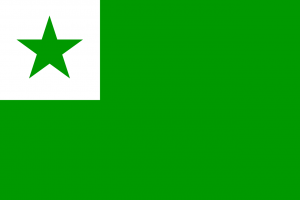Language/Esperanto/Grammar/Nouns
Jump to navigation
Jump to search
Rate this lesson:
Nouns in Esperanto
Names of persons, animals, things, concepts, materials, etc. such as man, dog, chair, warmth, milk - are nouns. A noun can be recognized because it's always possible to put a definite article (the) and/or an indefinite article (a, an) in front of it. In Esperanto, all nouns end in -O.
After mastering this lesson, these related pages might interest you: Gender, Negation, Questions & Possessive pronouns.
Definite article[edit | edit source]
The definite article is always LA. (Note that there's no such concept as noun gender in Esperanto).
Indefinite article[edit | edit source]
The indefinite article is never translated. Instead, it's just omitted (a house = letero). The plural version of a noun is created by adding a -J to the noun.
Examples[edit | edit source]
| English | Esperanto |
|---|---|
| the house | la domo |
| the houses | la domoj |
| a tulip | tulipo |
| tulips | tulipoj |
Sources[edit | edit source]
https://unilang.org/course.php?res=64
Videos[edit | edit source]
Esperanto lesson 2: Nouns, adjectives, plurals, and articles - YouTube[edit | edit source]
Esperanto lesson 4: Personal possessive pronouns, negation, yes ...[edit | edit source]
Other Lessons[edit | edit source]
- THE CORRELATIVES
- Conditional Mood
- Plural
- Pronouns
- PREPOSITIONS
- ADVERBS
- To Be at the Present Tense
- WORD BUILDING
- CONJUNCTIONS
- THE NEGATIVE

